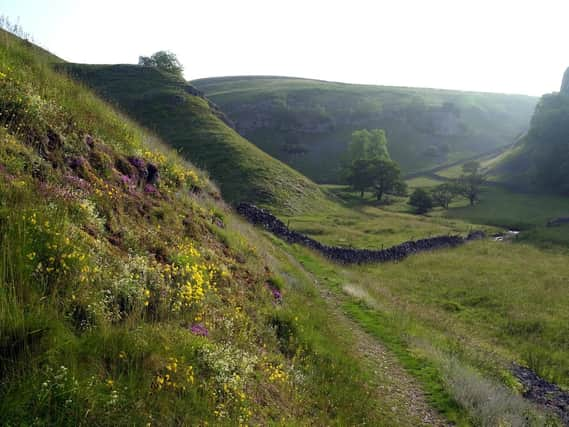How Yorkshire Dales barguest that haunts Trollers Gill is said to have inspired Sir Arthur Conan Doyle for Sherlock Holmes novel The Hound of the Baskervilles


Yet, if legend is to be believed, the North Yorkshire gorge holds rather an eerie tale - and one that is thought to have inspired one of Sir Arthur Conan Doyle’s most popular novels.
For most of the year, the stream bed at the site, near Skyreholme, Appletreewick, is bone dry. But that has seemingly not deterred the magical beasts that, according to folklore, call the place their home.
Advertisement
Hide AdAdvertisement
Hide AdThe caves of the ravine are said to be the lair of mythical creatures including trolls and sprites, with some tales suggesting that pixies, goblins, gnomes and boggarts also join them in inhabiting the land.
If that wasn’t enough, the story also goes that the Yorkshire Dales’ Gill is haunted by a fearsome barguest, a monstrous long-haired hound with eyes as big as saucers and razor sharp teeth.
Advertisement
Hide AdAdvertisement
Hide AdAccording to the Yorkshire Dales National Park Authority, legend has it that from one look, the beast can turn humans into stone.
While it has long been accepted that Conan Doyle’s frightening Sherlock Holmes story, The Hound of the Baskervilles, was based on a spectral dog that stalked Devon’s Dartmoor National Park, there are also claims that challenge that - and suggest that Yorkshire’s Trollers Gill may actually have been the writer’s inspiration instead.
There is speculation that the secluded spot and its barguest may have shaped the demonic beast character from which the book draws its title.
Advertisement
Hide AdAdvertisement
Hide AdAnd one theory is that Conan Doyle could have heard about the tale from his mother Mary, a keen teller of folk stories, who lived in Masongill on the west tip of the Dales, at the same time he was penning his 1901 masterpiece.
Whatever the speculation over exactly where the author drew his inspiration from, Trollers Green certainly has a rich folklore that goes back for decades.
Technical details: Shot on a Fujifilm X-T1 camera, 18-55mm lens with an exposure of 1/60th @f18, 400ISO.